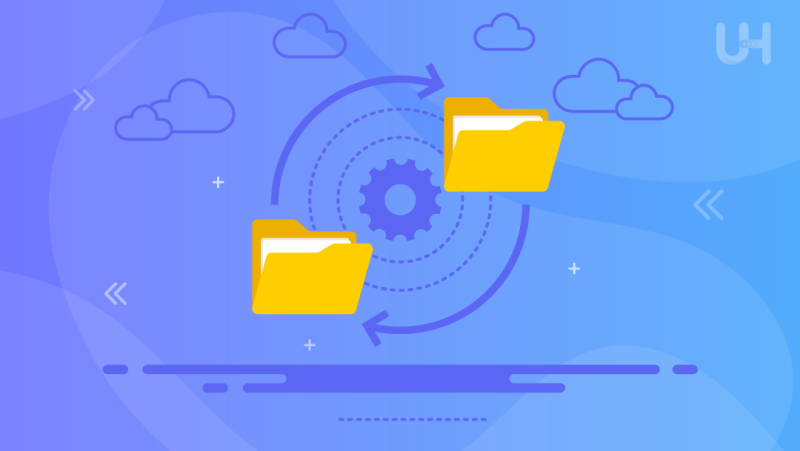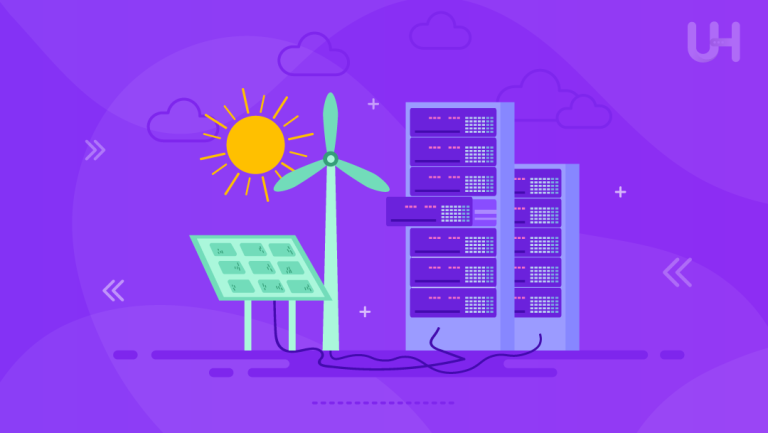Data replication is the most important process in data management and storage. When organizations continue to rely on vast reams of data, it ensures that data is accessible, available, and secure. Data replication is portrayed as making a replica of data from one location to another. It can be in the same system or across different systems that play a key role in achieving such goals.
In this article, we will define data replication, its benefits, how it works, the types of data replication, and various schemes and techniques in replication. We will also consider how data replication differs by location, rounding up a full overview of such an important process.
What is Data Replication?
Data replication refers to copying data from its prime location to one or more secondary locations. It might happen on a single database, many different databases, or various data centers. One reason for data replication is to ensure consistency and availability to various systems regardless of location and network status.
In a standard replication setup, all changes made to the source data are replicated to keep all copies up-to-date. The logs of how often and on what basis this is done depend on the replication type in use. Maintaining multiple copies of data will allow an organization to offer greater data availability. It will also enhance system performance and make it more immune to component failure or disasters.
Benefits of Data Replication

Here are some of the benefits of data replication:
Improve the Availability of Data
The most important advantage of data replication is improving data availability. Many copies of organizational data are stored at various distant locations. This can provide organizations with the redundancy critical in environments where downtime is impossible. This is the case with all financial institutions, healthcare systems, e-commerce platforms, and so on. With the replicated data, users are no longer interrupted whenever they wish to access it. Not even during system maintenance and unexpected outages.
Increase the Speed of Data Access
Data replication can improve the speed of data access and provide improved fault tolerance. This is particularly true when such users are geographically apart. Replicas can be placed on high-speed servers closer to the end users’ location to reduce latency and improve user experience. For example, a company dealing with customers in various parts of the world could replicate their data on servers across the target regions so that all customers have quick access to the data, no matter where they might be located.
Load Balancing
Another critical advantage associated with data replication has to do with load balancing. This helps release the load across different servers at high levels of data access. Hence avoiding situations where any one server is overwhelmed with requests. By replicating data across several locations, organizations can redirect user requests to either the closest or least busy server. Hence achieving load balancing and avoiding bottlenecks in performance. This ensures that systems remain responsive during peak usage.
Enhance Server Performance
Data replication can significantly improve the server’s performance by transferring read requests from the primary server to replicas. Most applications are dominated by read operations in data access. Redirecting these read requests to replicated servers frees the primary server to handle write operations and other important system tasks. This shall improve not only the performance of the primary server but also the efficiency of the total system.
Accomplish Disaster Recovery
Another critical advantage of data replication concerns disaster recovery. Consider that if an outrage gets really mean, something like a data center outage or hardware malfunctioning, then replicated data kept at a remote location can be very saving in nature. In this manner, an organization effortlessly switches over to replica data to avoid much downtime and further possible data loss. All this makes its services paramount in industries where integrity and data availability are critical, such as in the financial, healthcare, and government sectors.
How Does Data Replication Work?
Data replication means copying data from a source system to one or more receiving systems. The copy operation can be accomplished with data transferred in real-time, near real-time, or at certain periodic intervals according to the type of data replication.
- Data Capture: This is the first step in data replication, where the data to be replicated is captured. Depending on the replication technique, this may include either a complete dataset or changes only.
- Data Transformation: Sometimes, data needs to be transformed before replication. It can be converted into the desired format or processed according to certain rules to be acceptable in the target system.
- Data Transmission: The data is transmitted into the target system after being captured and probably transformed. This may involve a network, and how fast and reliable this happens depends on the network’s infrastructure.
- Data Application: This is the final stage of the process, wherein the target system applies the transmitted data, which undergoes a consistency check against the source system. Depending on the type of replication implemented, this can be done either in real-time or at fixed periodic intervals.
Types of Data Replication
The types of data replication are as follows:
Synchronous Replication
The process of real-time data copying from source to target and vice versa is called synchronous replication. In this type of replication, whatever changes are made to a source are in that specified amount also copied to the created copy at that instance, representing the changes of that source. This is where it follows that the great benefit of synchronous replication is that it must ensure all copies of the data are always consistent. However, this type of replication may be introduced with a potential latency because the source system would have to wait until the target system acknowledges changes to proceed. This might be a proper solution for the case of an environment with a stringent requirement for data consistency, such as a source system with heavy financial transactions or real-time analytics.
Asynchronous Replication
Unlike synchronous replication, asynchronous replication is a method in which there is no immediate need to synchronize the source and target systems. The changes that take place at the source system are captured and periodically sent to the target system. Because synchronization replication eliminates the latency of synchronous replication, it is usually employed in applications with very low tolerance for network latency.
But it also leaves the door open for potential data inconsistency, as there will always be time delays between when a change was implemented in the source system and when it is reflected in the target system.
Snapshot Replication
It takes snapshots of source data at periodic instances and moves these snapshots into a target system. This type of replication may work in scenarios where time synchronization of data may not be needed, and data could be located with little change throughout time. In general, snapshot intervals are scheduled time frames, such as daily or weekly. The advantage of snapshot replication is that it is relatively easy to get up and running and is not dependent on continuous network availability. On the downside, it may not be appropriate for environments where data changes frequently or current data is pivotal.
Merge Replication
Merge replication allows two systems to be modified at either the source or target, and such modifications are synchronized repeatedly for consistency. This becomes quite handy in scenarios where more than one system needs to update the same data—it’s the most generalized commercial deployment of the scenario for distributed database management systems. Merge replication ensures that all copies of the data will eventually be consistent, even though modifications are made independently on different systems. However, this can get pretty complex to implement and may also require conflict resolution mechanisms to manage situations where different systems are making changes that conflict with each other simultaneously.
Transactional Replication
Transactional replication works in environments where modifications to data have to be replicated as and when the modifications occur. In such a situation, every transaction on the source system will be captured and reapplied in the same order to the target system, maintaining relative ordering. This is to ensure data consistency throughout the copies and that the state of the source system is reflected in the target system at any point in time. Transactional replication is typically used in environments where retaining data accuracy and data consistency means a lot, for example, while working on some financial systems or real-time analytics.
Heterogeneous Replication
Heterogeneous replication is another kind that handles data replication between different kinds of systems. For instance, it could be a replication between a relational and a NoSQL database type. This becomes very useful when organizations use different types of data for varied purposes, yet they are required to make their data available in unison. Data between such kinds of systems may be relatively easy to implement in terms of heterogeneity and may require data transformation and other mechanisms to ensure compatibility across different systems.
Peer-to-Peer Replication
Peer-to-peer replication entails many systems in the replacement of data running both at the source and the target. This mode of replication results in a situation in which multiple systems singly access updating information and the updates are sent to all systems across the network via registering these changes found on all the other systems. Peer-to-peer replication applies in distributed storage environments where many systems require the same data and on platforms whose high availability becomes a critical issue. This can, however, be very complex to implement and require a conflict resolution mechanism if the systems change their actions with conflicting restrictions.
Step Towards A More Resilient Data Infrastructure!
Are you ready to enhance your data reliability and performance? With UltaHost’s dedicated hosting solutions, you can leverage advanced data replication strategies to ensure your data is always available, secure, and optimized for your business needs.
Data Replication Schemes
The data replication schemes used in DBMS are:
Full Replication
In full replication, the entire dataset is copied on all systems. This helps ensure that the various copies of the dataset are uniformly up-to-date and consistent. Full replication is used in any setting where data mismanagement may be fatal to a system powered by that information. However, it may also be large in terms of storage needs and network usage; where this happens, it becomes less appropriate for big datasets or resource-constrained environments.
Partial Replication
Partial replication is a process where only partial data across the systems gets replicated. This approach is quite useful in an environment that necessitates replicating only part of the information, such as a multi-region setup wherein region-specific data replicates to local unmanaged servers. Since partial replication reduces storage and network resources required, it would be more appropriate in large datasets or resource-constrained environments. However, this could also give rise to consistency problems with the data since various systems have access to different subsets of the data.
No Replication
In some environments, data replication may not be necessary or feasible. In a no-replication scheme, data is stored in one place, and all the systems access data from this one place. This reduces the complexity of handling the data and reduces the required storage and network resources. However, gives rise to major risks since the failure of this central store may mean that data cannot be accessed or is lost.
Data Replication Techniques
The 3 data replication techniques are explained below:
Full-table Replication
Full-table replication is where all table records from the source system are copied to the destination. This ensures the data is updated by keeping the table consistent between the source and target systems. Replications across the entire table typically occur in environments where data availability and consistency have to be maintained. However, this method also needs intensive cloud storage and network resources, making it unsuitable for large datasets or when resources are scarce.
Key-based Incremental Replication
Incremental key application is thus the process of replicating only changes to specific data through keys, not the whole table. It lessens the magnitude of data that has to be replicated. It is quite suitable—especially in a large-data or scarce-resources environment. This key-based incremental replication is applied when data changes are frequent and low latency is critical.
Log-based Replication
Replicating data changes through log-based replication captures changes in data in a database log. This means all changes to data will be replicated in the right order, ensuring consistency among all systems. Replication mechanisms are applied in environments where the accuracy and consistency of data assume key importance.
Types of Data Replication Based on Location
The types of data replication differ when categorizing it geographically. The 4 types are explained below:
Host-based Replication
Replication at the host level is generally performed with software installed on both source and target systems. It is a very flexible technology that can be used in many different environments, including physical, virtual, and cloud-based systems. This approach is often applied in environments where organizations must replicate data between different kinds of systems. It can also be done where they need very fine-grained control over the replication process.
Array-Based Replication
This creates a replica at the level of the storage array itself by replication mechanisms based on hardware. It is used when an organization has certain storage arrays supporting replication and simultaneously requiring high-performance or low-latency replication. In this scenario, array-based replication would predominantly be used within data centers or any high-performance storage environment.
Network-Based Replication
Network-based replication refers to data replication at the network level with special network appliances or software. It is used where organizations want to replicate data from one data center to another or the cloud environment. If high performance and low latency in replication are probable, that may be suitable for applications of vital importance.
Hypervisor-Based Replication
Hypervisor-based replication refers to data replication at the hypervisor level, essentially with software installed on the Hyper-V or hypervisor, which controls the virtual machines. The approach is usually used in virtualized environments where organizations need to replicate data between several virtual machines or different data centers. Hypervisor-based replication can run fast while faultlessly giving low latency replication suitable for virtualized environments with mission-critical applications.
Conclusion
For any modern data management, data replication is the way to ensure that organizations are equipped with the right tools and facilities respecting data availability, system performance improvement, and disaster recovery accomplishment. To make effective decisions on implementing the best data replication in their environment, organizations must understand the different types of data replication, the benefits they can provide, and various schemes and techniques for replication. For data integrity across various systems, improving the speed of access to data users spread across the globe, or enhancing server performance by load balancing, data replication is an important strategy in managing and protecting valuable data in a digital world.
Maximize your data performance and reliability with UltaHost’s NVMe VPS Hosting. Experience fast speeds and seamless data replication, making sure critical information is always accessible and secure.
FAQ
What is data replication?
Data replication is copying data from one location to another to ensure system consistency and availability.
Why is data replication important?
Data replication improves data availability, enhances system performance, and ensures disaster recovery by maintaining multiple copies of data.
Is synchronous replication different from asynchronous replication?
Synchronous replication updates replicas in real-time, while asynchronous replication updates them at scheduled intervals.
What are the main types of data replication?
The main types include synchronous, asynchronous, snapshot, merge, transactional, heterogeneous, and peer-to-peer replication.
How does data replication enhance server performance?
Data replication reduces the load on the primary server by offloading read requests to replicas, improving overall performance.
What is the role of data replication in disaster recovery?
Data replication ensures that a backup copy of the data is available in case of a system failure, minimizing downtime and data loss.
What are the different data replication techniques?
Common techniques include full-table replication, key-based incremental replication, and log-based replication.











